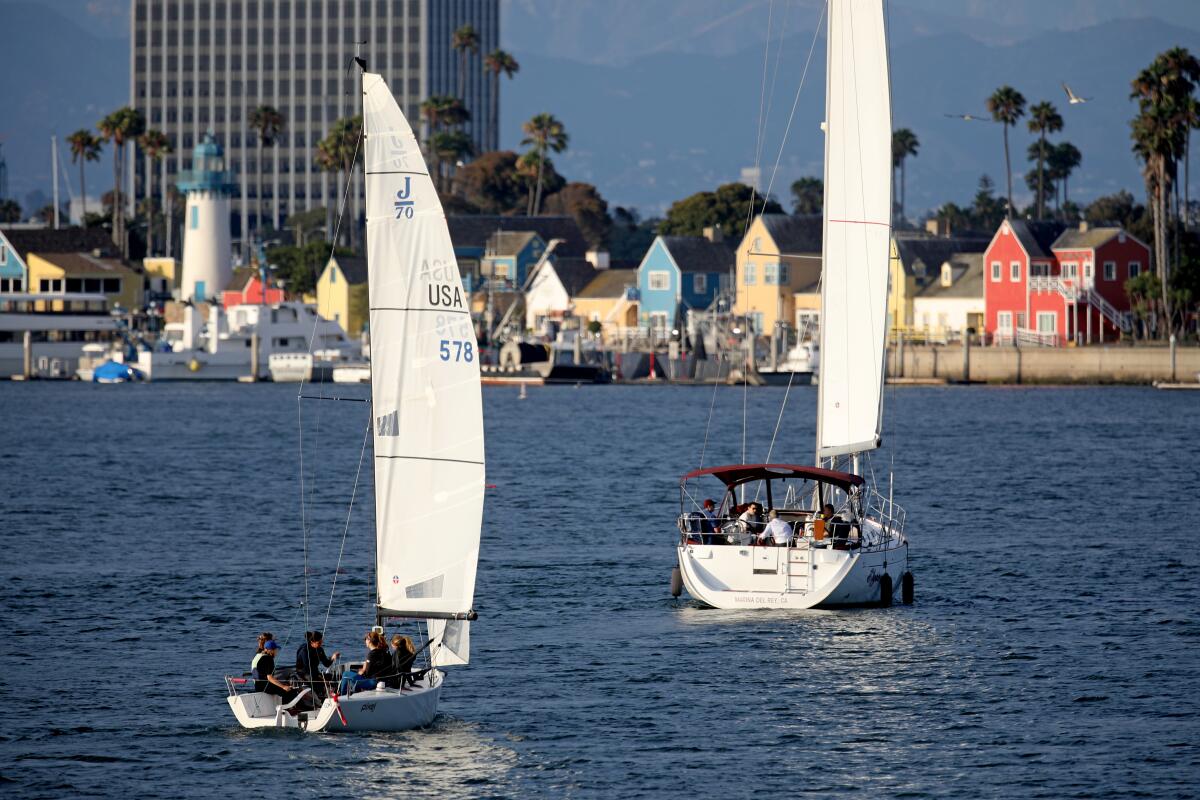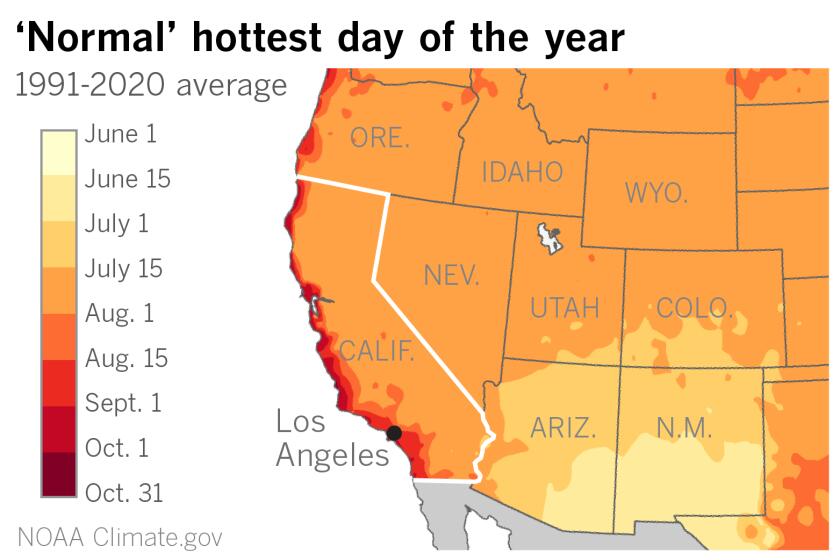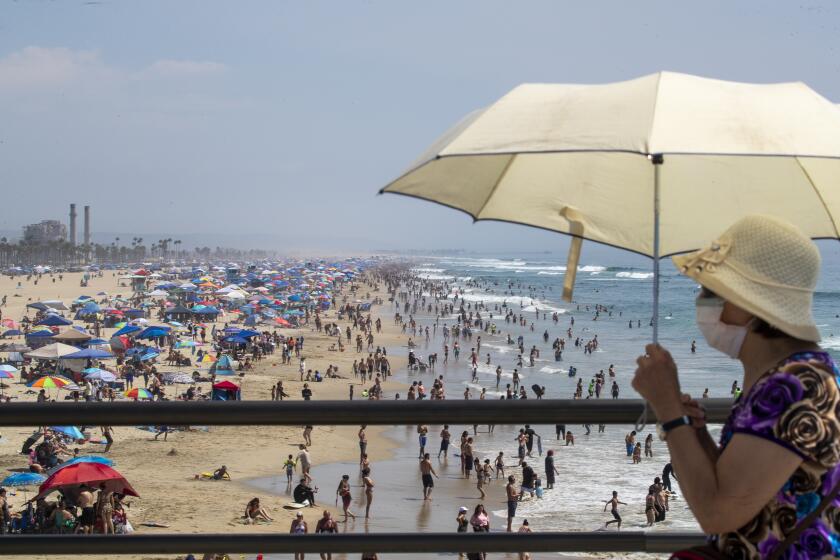What is with the miserable, muggy weather in SoCal, and when is relief coming?

- Share via
Is the heat getting to you?
You are not alone.
Southern California has endured days of sticky conditions, as well as intense heat, periods of heavy rain and even flash flooding. The summer has been scored with temperatures in the triple digits in some inland areas, with temperatures not cooling much at night either.
“It’s monsoon season for SoCal,” said Casey Oswant, a meteorologist with the National Weather Service in San Diego. “We’re getting a lot of moisture being pulled up from the Gulf of California.”
Parts of Southern California could experience a surge of monsoonal storms Tuesday and Wednesday, bringing the potential for lightning and flash flooding. Here’s what you need to know.
What is a monsoon?
A monsoonal storm is a shift in wind patterns. Monsoon flows pull moisture up into Arizona, California and Nevada after a shift in the pattern near the upper troposphere and can sometimes last a few days or stretch over longer periods, according to meteorologists.
This means more moisture lingering in the air, along with higher temperatures.
High pressure is currently passing over southwestern parts of the U.S., causing extra moisture. Just outside California, the dewpoint — which measures water vapor in the air — has been persistently high, according to meteorologist Ashley Nickerson with the National Weather Service in Las Vegas.
Coastal California gets its hottest days later than the rest of the country.
What are the impacts?
Some parts of the state have seen heavy rainfall in the last few days that has spurred flash floods and debris flows.
Approximately 30 drivers were stranded in their cars Sunday as heavy rain sent mud and debris onto Highway 38 leading to Big Bear.
- The Angelus Oaks area in San Bernardino saw a little more than an inch of rain over the weekend.
- Death Valley National Park was closed after fast-moving flood waters buckled and damaged the roadways. Most roads at the park have been hit by flash floods. Flash floods also struck Mojave National Preserve, and major roadways leading to the park are closed because of damage from the water, officials said.
- Meteorologist Sarah McCorkle with the National Weather Service in Monterey said downtown San Francisco saw one of its wettest Julys in recent years.
With a third year of drought, Southern California is facing a hot, dry summer.
What is coming?
Officials say the monsoon conditions will ease over the next few days, with slightly lower temperatures and fewer thunderstorms.
But a new system will strike Friday and last into early next week, with rising heat and chances of more thunderstorms.
More to Read
Sign up for Essential California
The most important California stories and recommendations in your inbox every morning.
You may occasionally receive promotional content from the Los Angeles Times.














